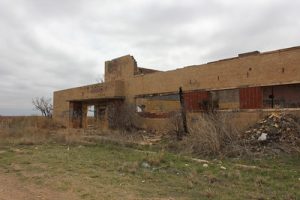Recently, I ran across an article on a website called CounterPunch, which offered a familiar litany of complaints about higher education. The author’s ultimate question focuses on the coming reckoning to post-secondary institutions. Although the author focused on four-year liberal arts colleges, the article, Anatomy of a Failing University , could well have been written about WCC.
Make no mistake about this: a reckoning is coming to higher education, and it will not be limited to four-year, liberal arts colleges. Colleges and universities of all kinds have created an unsustainable, unrecoverable business model that – over time – does more to close people out of higher education than embrace them. This includes WCC.
Poor administration will cause a growing number of higher education institutions to founder in the coming years. In 2017, one Harvard Business School professor predicted that half of all US colleges and universities will be bankrupt in 10 to 15 years. Right now, there are about 5,300 post-secondary institutions in the US. About 1,000 of these are for-profit colleges. About half of the remaining schools are publicly funded. The rest are privately funded non-profit institutions. Do not assume that all for-profit institutions will fail, because they will not.
COVID-19 has the real potential to accelerate the demise of some institutions. Since 2016, about 120 post-secondary institutions have shut their doors. Often, a closure leaves students scrambling to finish their education. The pace of higher education closures and consolidations is likely to increase as schools try (or fail) to cope with the financial impact of the pandemic on enrollment.
Higher education administrations that have not properly managed their institutions’ finances have put their schools at risk of financial failure.
Poor financial management will accelerate school closures
In the article, the author specifically called out the following risks that institutions have taken that will increase their likelihood of failing. They include:
- Failing to recruit and retain minority students
- Raising tuition beyond the cost-of-living
- Not investing in academic programs
- Encouraging students to borrow to finance their educations
- Having too many Vice Presidents, and super-sized administrations. (Not kidding.)
- Laying off faculty and staff instead of cutting administrative expenses
- Reducing the number of full-time faculty, and replacing them with part-time teachers
- Expanding sports programs
- Expanding online degree programs instead of improving face-to-face instruction
- Trading degree program for sub-degree programs
- Chasing trends in employment instead of leading with new programs
- Relying on marketing instead of improving academic programs
- Freezing or cutting faculty and staff salaries, while providing large bonuses to administrators
WCC Trustees will be confronting some very hard existential questions in the next decade, so WCC needs viable survival strategies. Hiring more Vice Presidents, raising tuition and inventing new fees, ignoring the College infrastructure, wasting millions of dollars on a health club, entertaining plans to build a hotel, and building nominally academic buildings are not viable survival strategies. In fact, they all but guarantee failure.
WCC needs authentic oversight
The taxpayers of Washtenaw County need Trustees who will insist that the Administration maintain WCC in the healthiest financial condition possible.
As a matter of survival.
That means not using its operating funds to pay off ill-advised debts that the taxpayers did not specifically authorize. And explicitly agree to fund.
Right now, we have a generously funded community college that is running out of money because the Trustees cannot (or will not) reject spending requests. They will not institute policies that conserve the taxpayers’ resources. Their chosen administration has not developed a meaningful survival strategy for WCC. Instead, the Administration’s highest priority seems to be incessant spending on more administration.
There are consequences to the Trustees’ decision to invest in WCC’s administration instead of WCC’s academic mission. There will be a price to pay for having diverted WCC’s operational funding to debt service on buildings the campus did not need and that cannot support themselves.
It is time to take a closer look at the Trustees who occupy seats on the WCC Board and replace those who value the Administration over the mission.
WCCWatch: Martin Thomas | WCCWatch: David DeVarti | WCCWatch: Christina Fleming | WCCWatch: Ruth Hatcher
Photo Credit: Joaquín Pérez Briz , via Flickr







































